One of the coolest things about riding a motorcycle or scooter, is the sense of camaraderie you get when you meet other riders. You can meet complete strangers from all walks of life and have an instant common ground in your love of bikes or scooters or both. In my experience, other riders tend to be a friendly bunch and It isn't uncommon to find yourself riding with groups of friends.
If you are planning on going for a ride with others, it could be very useful to learn some of the basic universal hand signals that can be used to communicate with each other while riding. These signals are helpful both for communicating your intentions, as well as understanding what other riders may be trying to tell you.
In this blog we are going to go over some of the most essential hand signals for communicating with your fellow bikers and even other road users, with helpful diagrams and even a chart to help you learn them all! Let's do it.
Communication is key
First up let's cover some general signals that can be useful for communicating with other road users.
These first three are basic but definitely essential. If you find yourself with no working indicators or brake lights for any reason, you can convey your intention to turn or stop with these signals, as set out in the UK Highway Code.
Left Turn and Right Turn:

Stop signal:
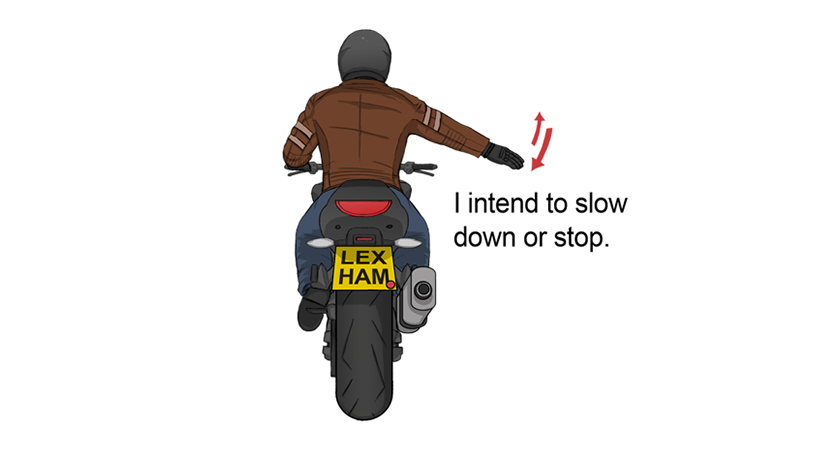
Those are the signals you should be using in emergencies to indicate your intentions to others in traffic, but what about communicating with your fellow bikers? The next set is commonly used signals that can be used while you are out and about!
Forgetting to switch off your indicators can be a common error on a motorcycle, it happens all the time, even to experienced riders. With that in mind, here's one to let someone know when they've left their blinkers running.
Telling another rider to turn on/off signal:
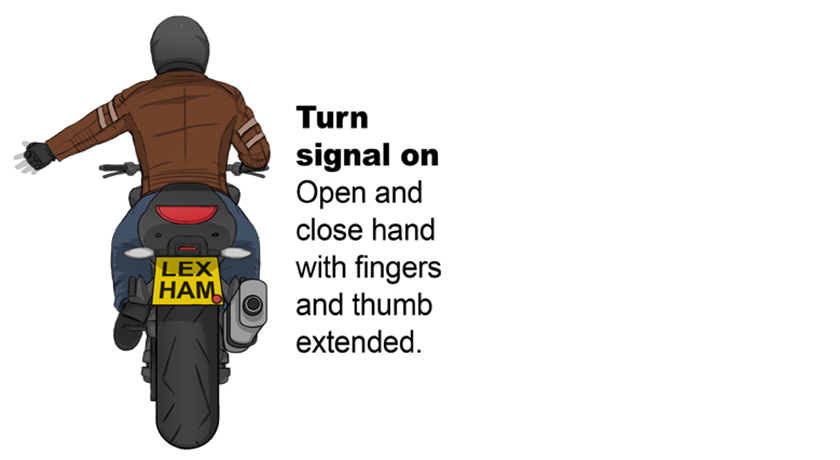
If there is a particular route that bikers love to ride, there is a good chance the police may be waiting somewhere along it with a speed gun. If you spot them, let other riders know the cops are ahead with this signal and help keep everyone safe and out of trouble!
Police ahead:
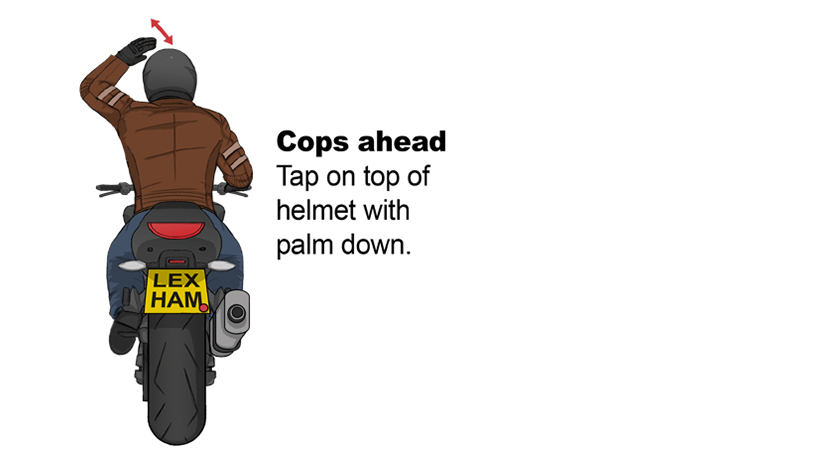
Riding in a group
Now let's look at some hand signals that are useful when you are riding with other bikers. If you're following a leader, or if you're leading a group of your friends, knowing these hand signals will help get your intentions across to the rest of the group.
Signal to follow the person ahead:
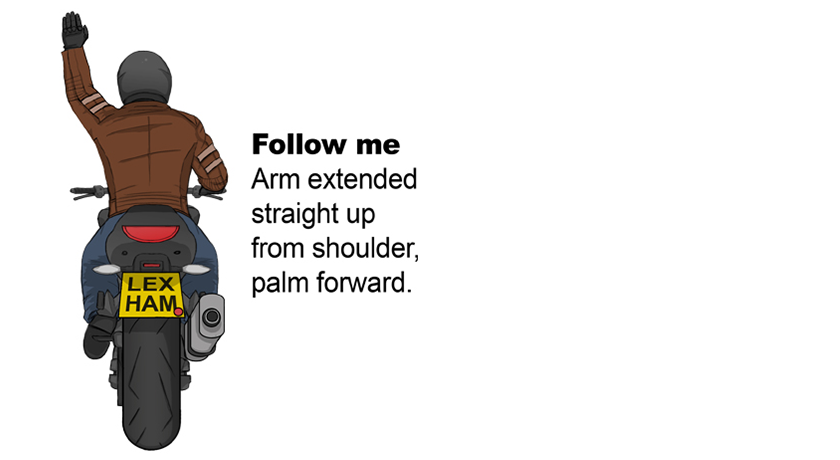
Get into single file/ double file:
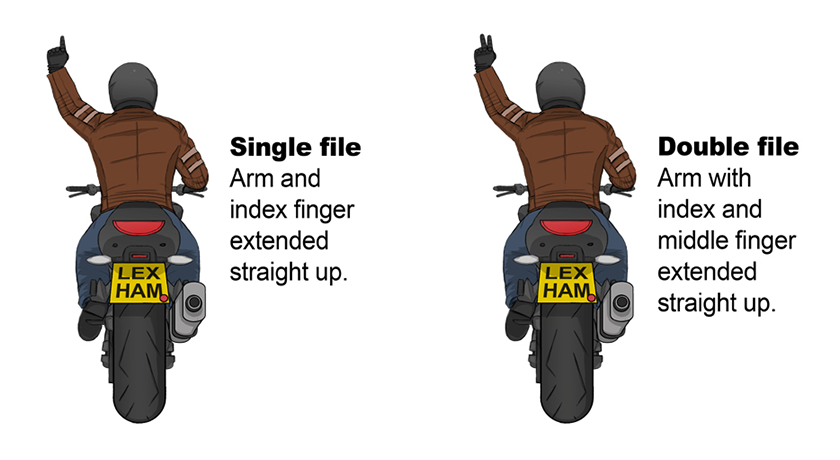
Speed Up or Slow Down:
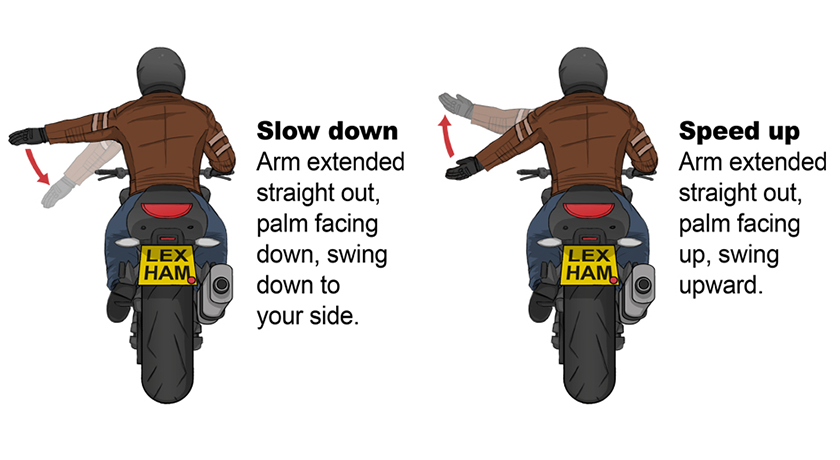
Learning universal hand signals can help keep you and other motorcyclists safe and provide a cheap and effective way to communicate on the go. No matter what type of rider you are, or what kind of bike or scooter you ride, knowing these signals can never hurt.
We have a full list of signals here, as well as the American versions of right turn and stop. Again the official UK highway code versions should be adhered to when signaling traffic, but these signals can be good when riding with friends, as they do not require you to take your hand away from the throttle and brake, which in my opinion allows more control and safety!
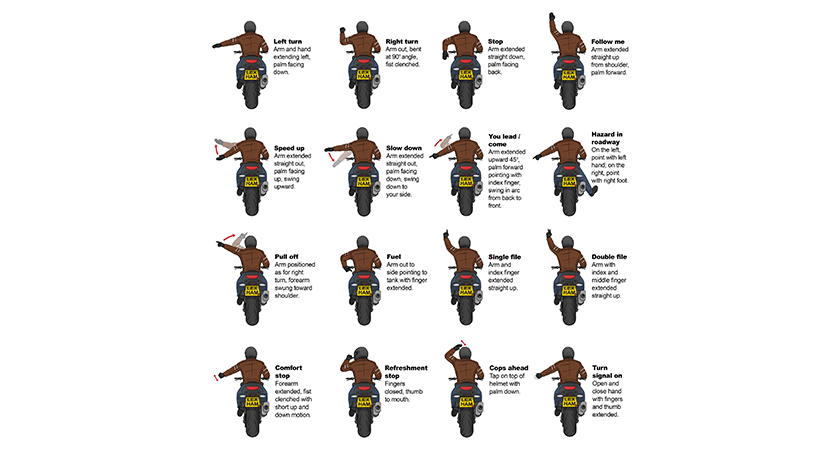
The Last Stop!
So there you have it, I hope you enjoyed my rundown of the most essential hand signals you should learn as a new rider!
Learning universal hand signals can help keep you and other motorcyclists safe and provide a cheap and effective way to communicate on the go. No matter what type of rider you are, or what kind of bike or scooter you ride, knowing these signals can never hurt.
Last but not least, if you have a motorcycle of your very own you need to insure, make sure to get a motorcycle insurance quotation direct with Lexham either by filling out an online form or by calling us on 01379 646 529.





